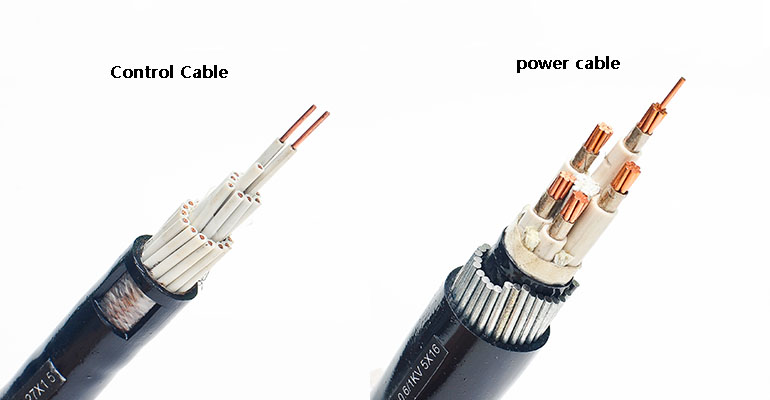- Offices Time:24 Hours Online
- Email:[email protected]
- WhatsApp:+8618339938759

Posted on November 10, 2022
Difference between control cable and power cable
Control cables are more commonly used and are suitable for industrial and mining enterprises, energy and transportation departments, and PVC insulated and PVC sheathed control cables for control and protection circuits with an additional AC voltage below 450/750 volts. Let’s explain the difference between power cables and control cables.
1.the difference between power cable and control cable
(1) The power cable is 0.6/1kv such as: VV,YJV
(2)The control cable is 450/750v such as: KVV,KVVP
(3)Power cables are divided into armored and unarmored, and control cables are generally braided shielding layers;
(4)Power cables have copper cores and aluminum cores, and control cables generally only have copper cores;
(5)Power cables have high withstand voltage, so the insulation layer is thick, and control cables are generally low-voltage, called low-voltage control cables, and the insulation layer is relatively thin;
(6)The color of the insulated core of the control cable is generally black and white, while the low voltage of the power cable is generally color-separated.
(7)The power cable requires the wire sheath to have sufficient compressive strength, tensile strength, temperature resistance and corrosion resistance. Control cable requirements are relatively low.
(8)The difference in the number of cable cores: the number of power cable cores is small, there are single core, 2 cores, 3 cores, 4 cores, 5 cores, according to the requirements of the power grid, the maximum is generally 5 cores. The control cable is used to transmit control signals, and the number of cores is large, ranging from 2 cores to 61 cores, or even more.

2.the commonly used cable classification is divided into five categories
(1)Wire and bare inner conductor products: refer to only conductors without insulating layers and other structures. Such as: copper, aluminum and various composite metal single wires, overhead transmission lines of various structures, flexible wiring, profiles and profiles, etc.
(2)Electromagnetic wire: In the form of winding, the magnetic field line is cut in the magnetic field to induce current, or the wire that generates the magnetic field through the current is called the electromagnetic wire. Such as enameled wire, fiber wrapped wire, inorganic insulated wire and so on.
(3)Power cables: wire products used to transmit and distribute high-power electrical energy in the main lines of the power system, called power cables.
(4) Wires and cables for electrical equipment: Wires and cables for power connection that directly transmit electrical energy from the distribution point of the power system to various electrical equipment and appliances. For example, wires and cables for electrical connection and control signals in various industrial and agricultural equipment. Such products are widely used and have a wide variety, and most of them need to combine the characteristics of the equipment used and the environmental conditions used to determine the structure and performance of the product. Therefore, in addition to a large number of general products, there are many special and special products. For example, general insulated wires, installation wires, rubber sheathed flexible cables, copper core control cables, signal cables, special cables for aircraft, automobiles, tractors, electrical and electrical leads, cables for rolling stock, wires for radio devices, mining cables, marine Cables, agricultural cables, oil mining and exploration cables, cables for field work, wires for various high-voltage DC equipment, flexible cables, etc.
Jinshui Wire&Cable Group is a professional Chinese wire and cable manufacturer, providing customers with professional services, answering wire and cable knowledge, and is committed to providing more help and services to more users.
Post categories
Most Popular Posts
-
The 136th Canton Fair welcomes you to participate!
October 12, 2024 -
High temperature cable introduction
July 26, 2024 -
Kenya Power and Energy Exhibition 2024
June 11, 2024 -
Introduction of rubber sheathed cable
June 5, 2024





